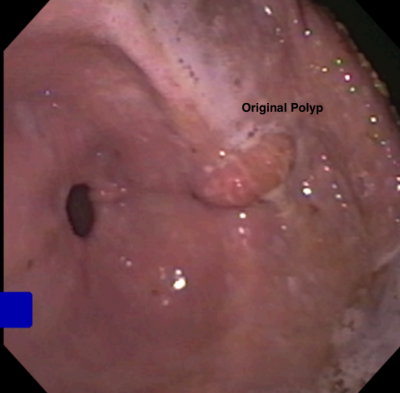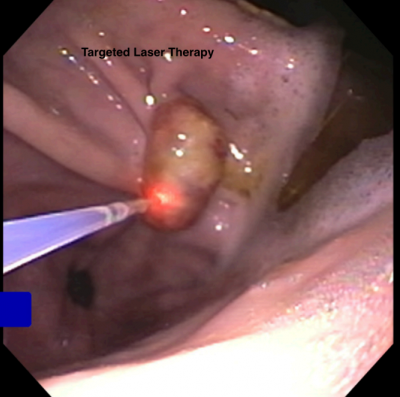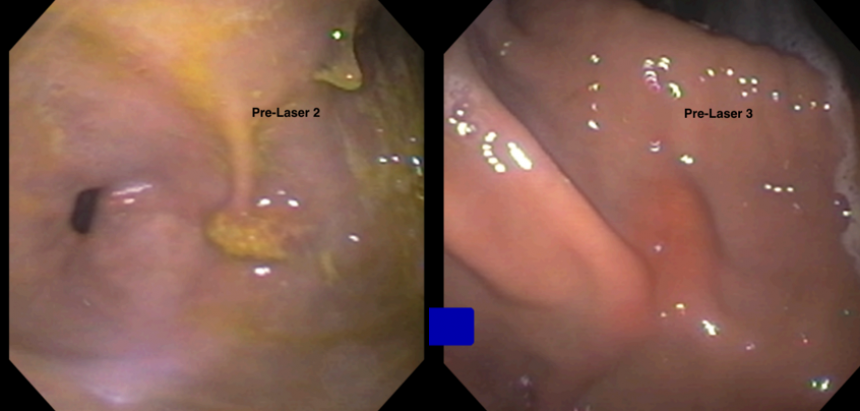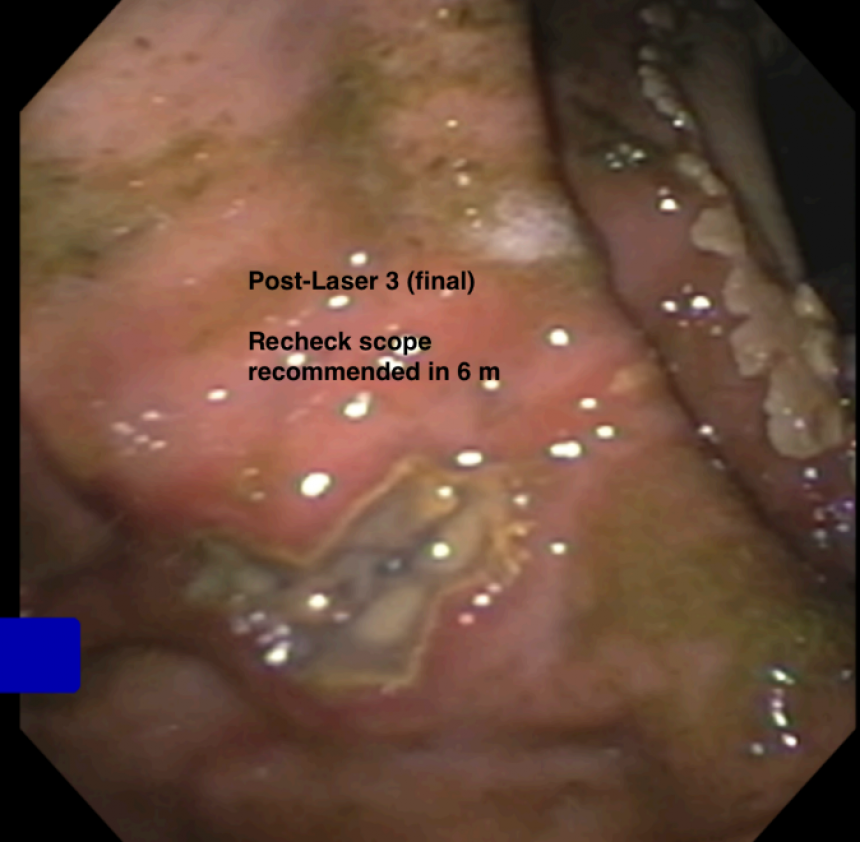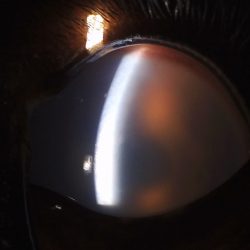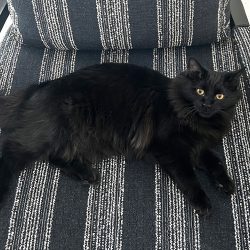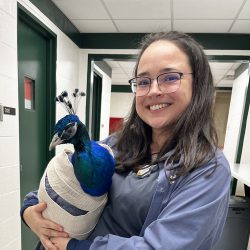History and Diagnosis
Sam Shivers, a 13-year-old Irish Sporthorse gelding used for upper-level dressage, was presented to the MSU Large Animal Clinic on December 14, 2023, for a gastroscopy. He had been referred to MSU by his local veterinarian, Dr. Pamela G. Loomis. Upon presentation at MSU, Sam was bright, alert, and responsive, but his owner felt his energy level, work ethic, and appetite were not normal. Sam had been with his owner for most of his life, so she knew his routine and behaviors very well.
Sam was sedated, and his care team performed a routine gastroscopy. This procedure revealed two small, healing ulcers on the margo plicatus at the level of the lesser curvature of the stomach. Additionally, one raised moderately large and hyperemic polyp was located within the glandular mucosa surrounding the mucosa. Sam was diagnosed with equine squamous gastric disease (mild: grade 2/4) and a singular polyp. He recovered without incident from the sedation and was later discharged from the hospital. He was started on Misoprostol to treat his ulcers.
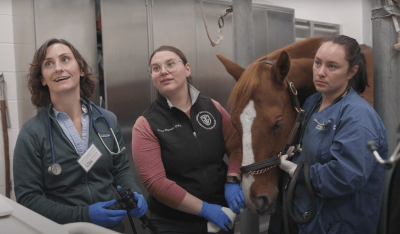
When he returned for a checkup withs Drs. Lauren Bookbinder and Emily Hess on January 24, 2024, his ulcers were showing signs of healing, and it was recommended that he return slowly to his normal exercise routine. However, on February 22, 2024, his gastric ulcers had recurred, and the polyp was biopsied. The biopsy revealed chronic inflammation and bacteria within the cells of the tissue, and this time omeprazole (Gastrogard), sucralfate and doxycycline were added to his treatment regimen.
After a month of intensive therapy, his gastric ulceration had healed, but his owner and care team were concerned that the ulcers would reoccur if this therapy was reduced. The polyp remained static, and the pros and cons of removal were discussed. Due to the nature and location of the polyp, laser ablation was the only reasonable option for removal. This procedure, while described, is not common. It had not been performed at MSU, or other large referral hospitals to which the client could potentially travel, such as Indiana or Kentucky.
Treatment and Outcome
Sam underwent three laser ablation treatments approximately three weeks apart using a diode laser. He was fasted for each appointment and gastroscopy was performed with approximately 3000J of energy delivered to the polyp through the gastroscope. Sam was sedated and administered a single dose of flunixin meglumine for each treatment. The day after each laser treatment, Sam was rescoped to document the effect of the laser on the polyp. Sam remained on sucralfate, a 1 mg/kg dose of omeprazole (Gastrogard), and management for the prevention of gastric ulcers (24/7 access to hay, as much turnout as possible) during his treatment course. During treatment, he was able to continue with his normal turnout and exercise routine. Sam responded well to the laser ablation treatments with no apparent complications, and four months after the final laser, the polyp was not visible. Sam’s general energy level, work-ethic, performance and appetite have normalized and even exceed the owner's expectation.
Comments
Sam’s gastric polyp was successfully ablated with the diode laser, with apparent improvement in his clinical signs and no complications. We encounter these gastric polyps routinely, particularly in high-level sport horses. Sometimes these polyps cause clinical complaints, but sometimes they are incidental findings. Therefore, we generally recommend biopsy and medical management in attempt to resolve any inflammation of ulceration associated with the polyp to see if that improves any clinical signs. Occasionally, the horse’s care team, including the owner, referring veterinarian, and specialist veterinarian, become increasingly concerned that the polyp affects the horse’s comfort. In these cases, laser ablation is a reasonable treatment plan to attempt to resolve the clinical signs. It is not possible to completely predict if a horse’s behavior and comfort will improve following the ablation and a thorough consultation is recommended to determine if it is the best treatment course for your horse, like it was for Sam.
